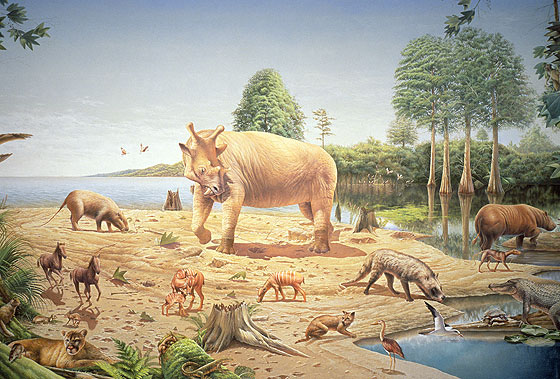Modern Atmospheres (290 million years ago to now)
During most of the past 290 million years, Earth was much warmer than it is now. Scientists understand that changes in the atmosphere affect Earth’s climate. Between 200 and 45 million years ago polar ice caps were small or absent, and winters were warmer around the globe. In these warm climates, many types of plants and animals lived in the polar regions.
The Eocene Epoch was the warmest part of the past 65 million years. During the early Eocene, palm trees grew as far north as Canada, and forests of dawn redwoods covered Ellesmere Island near the North Pole. The Arctic Ocean was not permanently frozen, alligator relatives swam in the swamps on Ellesmere Island, and mammals related to flying lemurs climbed in the dawn redwood trees. Since the Eocene is so recent (geologically speaking), many clues remain to tell scientists about the atmosphere and climate, and how these affected life on Earth.
Forecast: Heat Wave!
Eocene fossils from near the poles tell us that the yearly average temperature at high latitudes was as much as 25°C (45°F) warmer than it is today. If the whole planet had been that much warmer, the average temperature at the equator would have been close to 50°C (122°F)—too hot for many kinds of animals and plants to survive. Instead, scientists think that in the Eocene the tropics were about the same temperature they are today, and that Earth’s warmth was more evenly distributed from the equator to the poles.


